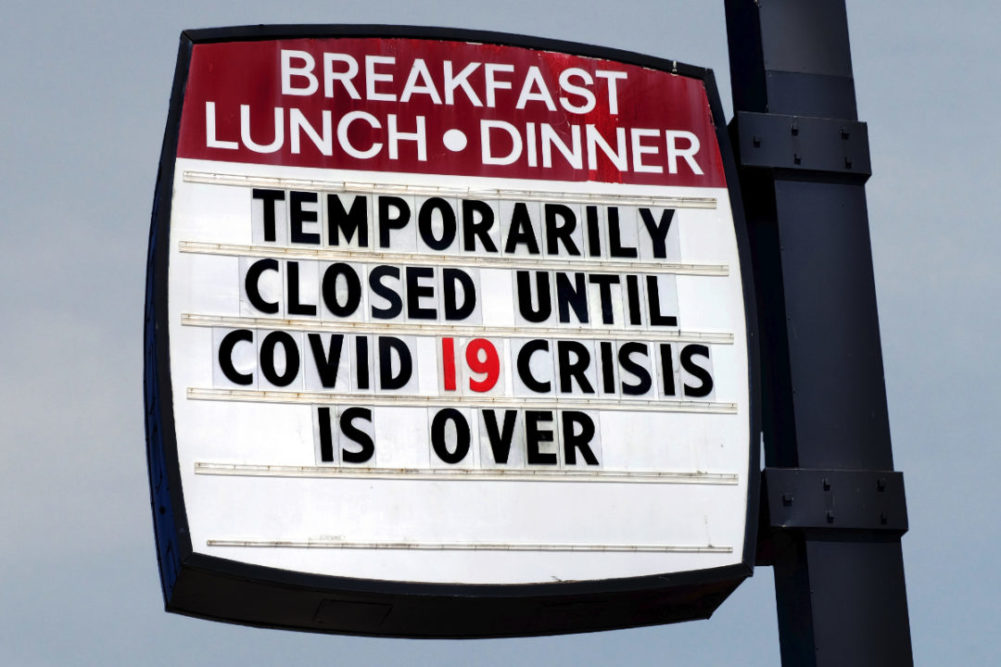WASHINGTON — The beleaguered restaurant industry, already severely damaged from restrictions on businesses because of the coronavirus pandemic, was bracing for a bitter winter.
Vaccines to combat COVID-19 were being rolled out, but it was expected for the next several weeks, through much if not all the winter, pandemic cases and related deaths may continue to rise. In response, governments at state, county and local levels were tightening limits on social gatherings, including indoor restaurant dining.
Outdoor dining on patios, decks and sidewalks, which in recent months helped sustain many restaurants whose dining rooms operated at reduced capacity because of social distancing requirements, was ending across much if not most of the country as winter weather takes hold.
Take-out and home delivery remained viable options, even lifelines, for many but certainly not all restaurants.
The National Restaurant Association (NRA) on Dec. 2, in its fifth industry survey conducted during the pandemic, estimated more than 110,000 restaurants, or 17% of all restaurants operating before the pandemic, have closed. Most of the closings took place early in the pandemic, but the NRA said 10,000 restaurants have closed in the last three months alone.
“This means these businesses are closed on either a temporary or permanent basis,” the NRA survey’s summary said. “It will be some time before it becomes clear how many of the temporary closures become permanent. Many restaurant operators are waiting to see if or when it makes sense to reopen.”
Sean Kennedy, the NRA’s executive vice president for public affairs, in a Dec. 7 letter to the leaders of the Senate and House of Representatives appealing for federal assistance, observed, “The vast majority of permanently closed restaurants were well established businesses and fixtures in their communities. On average, these restaurants had been in business for 16 years, and 16% had been open for at least 30 years.”
As the NRA looked to the future, its survey of 6,000 restaurant operators, conducted Nov. 17-30, asked operators whether in the absence of federal assistance they thought their restaurants would still be open for business in six months; 37% of respondents said no.
The survey considered the state of the restaurant industry as of October. Because of the surge in COVID-19 cases in the fall, more stringent restrictions were being placed on indoor dining and drinking establishments, so circumstances for most restaurant operators have only worsened since the survey was conducted.
The NRA study found consumer spending in restaurants remained well below normal levels in October.
“Overall, 79% of restaurant operators said their total dollar sales volume in October was lower than it was in October 2019,” the study said. “Only 12% reported higher sales in October. Sales were down 29% on average.”
Restaurant operators reported sales declines for both full-service and limited-service segments. Sales declines were the most severe in the case of independent full-service restaurants, where sales were down 36% from a year ago.
“The vast majority of restaurant operators do not expect business conditions to improve in coming months,” the survey said.
Seventy-five percent of operators expected their sales to decrease from current levels during the next three months. Only 6% of operators expected their sales to increase from current levels in that span.
A breakdown revealed 83% of full-service restaurant operators and 67% of limited-service operators expected their sales to decrease from October levels during the next three months.
Already in October, outdoor dining was beginning to decline as an option with 49% of operators saying their restaurants in that month offered outdoor dining compared with 67% in September. Fifty-two percent of full-service operators said they offered outdoor dining in October compared with 74% in September. Forty-six percent of limited-service operators said they offered outdoor dining in October compared with 60% in September.
Meanwhile, costs of running restaurants were on the rise with 59% of operators saying labor costs as a percent of sales were higher than before COVID-19. Only 21% of respondents said labor costs were lower. Eighty-six percent of operators said their profit margin was lower than before COVID-19, and only 6% said their profit margin was higher.
The survey indicated 36% of operators said they were considering temporarily closing their restaurants until the pandemic is brought under control, including 43% of full-service operators and 28% of limited-service operators.
“Although many restaurants added back employees after the initial lockdowns, overall staffing levels remain well below normal,” the survey found.
Eighty-one percent of operators said their staffing levels in October were below what they would have expected in the absence of COVID-19. Forty-five percent of respondents said their restaurants were operating with more than 20% fewer-than-normal staff.
Forty-nine percent of operators said they expected staffing levels to decline in the next three months with 58% of full-service operators and 40% of limited-service operators expecting staffing cuts.
The winter of 2021 is expected to exact a heavy toll on the nation’s restaurant industry, especially should federal support prove to be lacking or too light.


